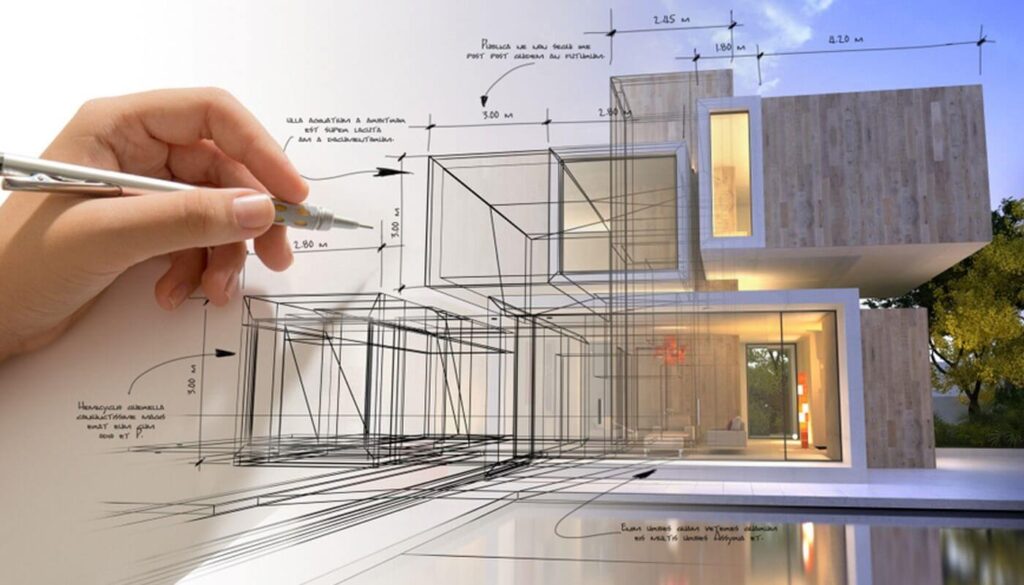Comprehending the Collaborative Refine Between Architects and Engineers in Modern Building Projects
The collective process between designers and designers is important in modern construction projects, as it balances layout intent with engineering feasibility. Discovering these dynamics reveals insights that can substantially impact project end results and overall market standards.
The Significance of Cooperation
The collaborative synergy in between architects and designers is necessary for the effective understanding of any type of construction project. This collaboration unites distinctive proficiency and viewpoints, making it possible for the assimilation of ingenious layout with practical engineering options. By collaborating, designers and engineers can make certain that a task not just meets visual and useful needs yet likewise abides by security, sustainability, and financial restraints.
Cooperation cultivates a common vision, assisting in the alignment of goals and assumptions from the start. This placement is vital in addressing prospective difficulties and mitigating risks that can occur during the task lifecycle. A collective method permits for the efficient allowance of resources, maximizing both time and cost.
The importance of cooperation expands to the repetitive procedure of layout and building and construction, where responses from designers can educate building choices, leading to more possible and sustainable layouts. Alternatively, designers can motivate engineers to think artistically concerning just how to accomplish structural stability without compromising artistic intent. Ultimately, the collaborative connection in between designers and engineers is not just useful; it is essential to the production of high-quality, practical, and cutting-edge developed settings that satisfy the requirements of society.
Interaction Techniques and Devices
Efficient interaction methods and devices are important for cultivating partnership in between architects and designers throughout the project lifecycle. Developing clear networks of interaction is important to make certain that all team participants are aligned with job objectives, timelines, and obligations. Normal meetings, both in-person and online, provide chances for stakeholders to review progress, address concerns, and make informed choices.
Utilizing project administration software program, such as BIM (Building Info Modeling) systems, enhances partnership by allowing real-time sharing of style alterations and technical specifications. These tools promote openness, enabling engineers and engineers to visualize changes and examine their influence on the total task.

Shared Goals and Job Vision

Developing common objectives involves open dialogue and an extensive understanding of each technique's payments. Designers generally concentrate on style intent, spatial connections, and customer experience, while engineers stress architectural integrity, systems performance, and conformity with policies (cda architects). When these point of views are straightened, look at this now the outcome is a cohesive task that follows both imaginative desires and technical feasibility
Additionally, a well-defined job vision cultivates accountability amongst group members, encouraging each individual to take possession of their duty in attaining the preferred result. Regular check-ins and collective workshops can better reinforce this dedication, permitting modifications to be made as the go task develops. Ultimately, a shared vision not just improves teamwork however likewise elevates the quality of the last deliverable, causing effective task completion.
The Role of Innovation
Leveraging innovation has actually come to be necessary in enhancing cooperation between designers and engineers. The integration of advanced software program tools assists in real-time interaction and details sharing, allowing groups to function a lot more efficiently and successfully. Building Info Modeling (BIM) attracts attention as a critical technology, permitting both engineers and engineers to create in-depth 3D designs that encapsulate layout intent and structural integrity. This common aesthetic representation minimizes misconceptions and simplifies the decision-making procedure.
Furthermore, cloud-based platforms make it possible for seamless collaboration, permitting job stakeholders to access and upgrade task data from anywhere. This promotes a society of transparency and liability, as modifications can be tracked and assessed in real-time. Additionally, mobile applications additional boost interaction, offering on-site groups with instant accessibility to project specs and updates.
Emerging technologies such as expert system and artificial intelligence are additionally starting to play a duty in predictive analysis, helping teams recognize possible concerns before they emerge. Ultimately, the function of modern technology in architecture-engineering partnership not just improves workflow performances yet likewise improves technology, leading to more successful job outcomes. By welcoming these technological innovations, architects see this website and designers can ensure a much more cohesive and effective collective procedure throughout the building lifecycle.
Case Research Studies in Successful Collaborations
Countless instance researches highlight the extensive influence of efficient collaborations between architects and designers on job end results. One significant example is the cooperation on the High Line in New York City City, where landscape designers, engineers, and metropolitan planners functioned together to change an abandoned railway into a lively public park. This multidisciplinary method not just improved the visual high quality however additionally guaranteed architectural security and environmental sustainability.
An additional exemplary case is the style and building of the Sydney Opera Residence. The collaboration in between architect JÃ ¸ rn Utzon and structural designer Ove Arup exhibited cutting-edge analytical. Their partnership permitted the iconic shell-like layout while resolving intricate engineering challenges, eventually leading to an ageless building masterpiece.
The Burj Khalifa in Dubai additionally shows the significance of collective initiatives. cda architects. The assimilation of architecture and engineering expertise allowed the job group to attain unprecedented heights while adhering to safety and security regulations and aesthetic vision
These examples highlight the value of interaction, trust fund, and shared objectives. In today's complex building atmosphere, such partnerships are important to browsing obstacles and delivering projects that meet both functional and visionary goals.
Conclusion
In verdict, the partnership between architects and engineers is crucial for the success of modern building and construction jobs. Effective interaction methods, a shared task vision, and the combination of advanced modern technologies are important elements that promote this collaboration.